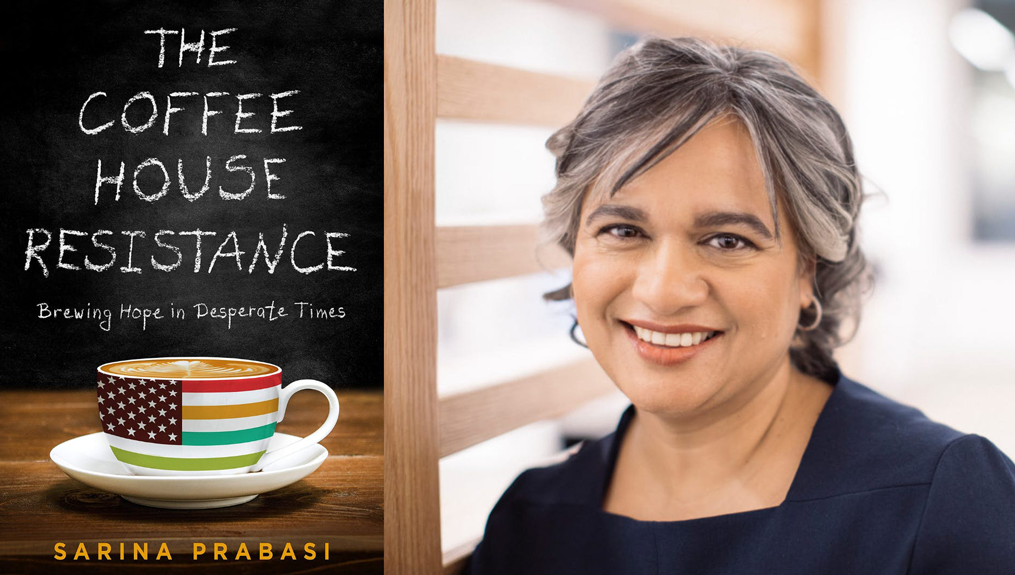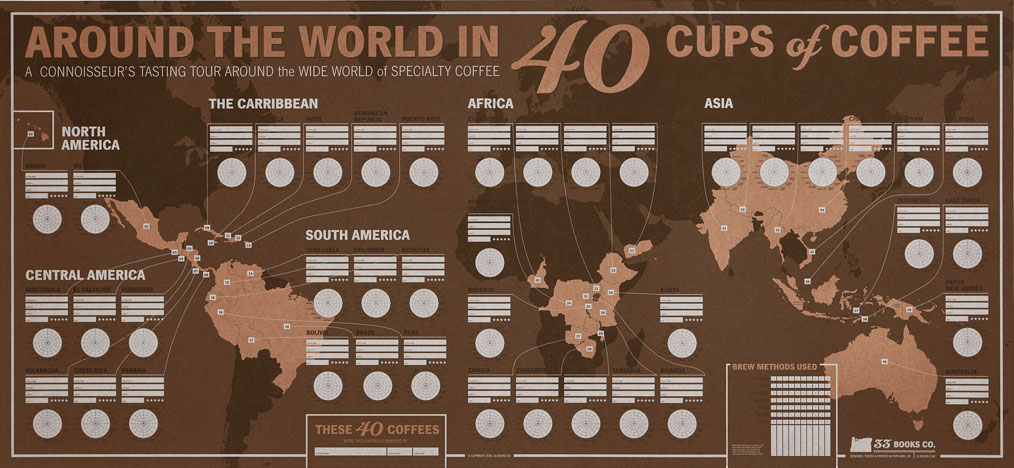[T]ype #coffeegram into the search bar of Instagram and you’ll be met with stunning images of specialty coffee artfully tossed into the air, splashing out of cups, and even thrown face-first onto willing subjects. Some of these shots have even been featured on Fresh Cup’s own social media feeds. But what message do these dynamic images send to the very same customers whom café owners are asking to pay $4–5 per serving?
@wastingcoffee is a satirical response to such photos and videos, highlighting the contradictory nature of these images while starting a conversation about the value of coffee, who decides that value and how that value is communicated to customers. Umeko Motoyoshi, whose inclusive coffee merch and progressive dialogue you’ve likely come across on Instagram through their account @Umeshiso_, is also behind the @wastingcoffee account. After four short months of running the account, Motoyoshi is releasing their first book, The @wastingcoffee Guide to Not Wasting Coffee, this week. The book introduces a holistic operational approach to reducing waste and lowering costs, while increasing quality, customer experience, and team morale. Motoyoshi begins by exploring the green coffees that roasteries choose to purchase and from there moves into roasting, brewing, the math behind extraction yield, barista training, latte art throwdowns, and more.
The @wastingcoffee Guide to Not Wasting Coffee will be available on Saturday, June 15, 6 p.m., at the Faema pop-up café in New York City at 198 Allen Street. Motoyoshi will lead an in-depth class exploring sustainable alternatives to the coffee industry’s more wasteful practices, and each guest will receive a copy of the book. Tickets are available on EventBrite for $20. Following the launch, The @wastingcoffee Guide to Not Wasting Coffee will be available through umeshiso.com.
Fresh Cup reached out to Motoyoshi to chat about the upcoming release.
Why was it important to you to write The @WastingCoffee Guide to Not Wasting Coffee?
There are some aspects of coffee that remind me of The Emperor Has No Clothes. We have all these unquestioned standards that we just go along with, even if they don’t really make sense to us. And it’s super vulnerable to disagree with a perceived majority! But I started to realize that the “majority” didn’t really exist as I understood it. A lot of other people also feel stressed about how wasteful certain industry practices can be. At this specific time in our history, especially, as the C market price hits all-time lows, wasteful practices are just irresponsible and insensitive. I wrote this handbook because I’ve worked in coffee for my entire adult life, it means a lot to me, I want it to be around for a long time, I want to continually grow my respect and care for the amazing product that we work with, and I want to share that with other people. So basically I wrote this because I honestly love coffee.
What was the most difficult part of creating the book?
The book was created to be engaging for coffee professionals from all backgrounds and experience levels. I decided to print it zine-style too, with saddle stitching, to keep the price point accessible to a wider range of people. My goal was for the handbook to be both informative and really readable, so it can be used a reference and also enjoyed cover to cover. It’s tough to present technical perspectives on extraction yield and roasting in a fun way, so that was a great challenge!
How have you seen the conversation surrounding coffee change?
Would you have been able to make this book even five years ago?
At this point I very clearly understand that quality is part of a holistic system, and that quality does not necessitate waste. If anything, it’s quite the opposite. But five years ago, I was still pretty convinced that coffee waste was a necessary evil in the pursuit of quality. No one had ever told me differently. During my ten years as a barista, I’d constantly been told that I should be willing to dump out multiple shots in a row if they fall one second out of parameters—even if they’re going in a mocha. It was very taboo to suggest that maybe dumping out perfectly good espresso shots isn’t worth it. And if someone proposed saving dial-in shots and baking with them—I can’t imagine how that would have gone down in many of the cafes environments I was used to.
Five years ago, coffee discourse just didn’t have room for people to simply share their thoughts. Any time I expressed an opinion I risked being the target of hostile debate, labeled an imposter, someone who just doesn’t understand quality. Forums were 100% male-dominated and every conversation was a pissing contest. A lot of that came from insecurity, and it’s still present in many spaces today. But it’s definitely gotten better. That’s a direct result of really hard work by leaders in the community who are invested in making specialty coffee more welcoming and open-minded.
Five years ago I wouldn’t have been in a place where I could have written The @wastingcoffee Guide To Not Wasting Coffee, and I don’t think the industry would have been able to receive it with an open mind. Things are different now and it’s not an accident! I’m incredibly thankful to the many individuals who have worked so hard to improve the culture in our industry. I always shout these people out, but I really mean it—I have benefitted so much from the changes created by people like Michelle Johnson, Jenn Chen, Ashley Rodriguez, and many others. Without them, I really might not have been able to write this book.
Can you recommend any social media feeds that feature coffee in a visually appealing or compelling way that don’t resort to wasteful shots?
Overall my issue with coffee waste photos isn’t just the coffee wasted to create that shot—it’s the message we’re sending to consumers. I’m interested in creating imagery that’s beautiful and that communicates value and respect for our product. When our customers see us dumping coffee out on the floor—the same coffee that we’re charging them $5 or $6 for—that’s confusing. I want our customers to get clear and consistent messages that a pour-over really is worth $5—or more! I just started following a really beautiful Instagram account called @hanse____. It’s not a “specialty coffee” account per se, but we could take a lot of cues from them. They create hypnotic, beautifully styled videos of coffee drinks being carefully prepared. Every video could be in an “oddly satisfying” compilation, and they all make me want to drink coffee. Additionally, their sound editing takes heavy cues from ASMR videos and it enhances the overall effect even more. I think folks tend to fall back on photos of coffee being thrown, dumped out, etc., because those photos capture motion and feel dynamic. An easy way to capture motion is to literally just make a short video. Footage of coffee being carefully poured into a glass, until it hits just the right level, hits all the “ahh” feels. And you can follow @hanse____‘s cue and shoot the videos with your Instagram feed in mind—meaning, be sure to include a shot that will look beautiful as a still in your gallery.















